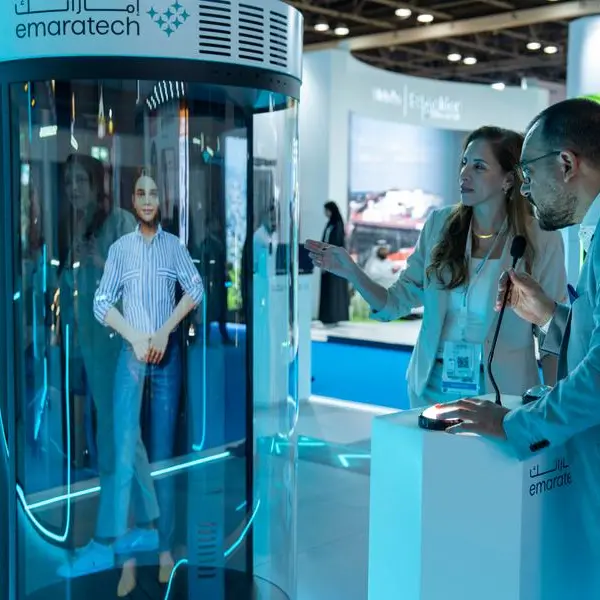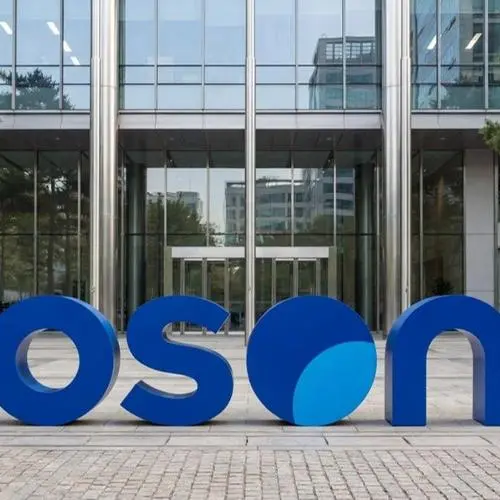Dubai, UAE; February 4, 2009: A first-ever 208-person study comparing the renal safety, occurrence of cardiovascular adverse events and diagnostic image quality of GE Healthcare's isosmolar contrast media (CM) iodixanol (Visipaque) and the low-osmolar CM iopromide in select patients concluded iodixanol is associated with lower incidence of contrast-induced neuropathy (CIN) and cardiovascular events (CV) than iopromide, when used in patients with chronic kidney disease. The study is published in December's Catheterization and Cardiovascular Interventions, a leading scientific journal that covers current hot topics in interventional imaging.
The prospective, randomized, double-blind, single-center study was authored by Bin Nie, M.D. and colleagues from Beijing Anzhen Hospital, Beijing, People's Republic of China. The authors' objective for the study was to compare the renal safety as well as cardiovascular effects and diagnostic image quality of iso-osmolar iodixanol vs. low-osmolar iopromide in patients with chronic kidney disease (CKD) undergoing coronary interventions.
"Given the increase in patients with CKD and also with heart disease we wanted to investigate if there was a difference in renal and cardiovascular complications between the isosmolar contrast medium iodixanol and the low osmolar contrast medium iopromide." said Dr. Bin Nie. "These results may have an important influence in clinical decision making regarding the selection of the appropriate contrast media for the appropriate patient."
The conclusion of the study indicates that •isosmolar CM iodixanol appears to be associated with a significantly lower incidence of CIN and composite CV compared with the low-osmolar CM iopromide in patients with CKD undergoing coronary angiography with or without PCI. The authors indicated that there was no difference in image quality between the two contrast media, in spite of iopromide's higher iodine content.
Prof. Yu-jie Zhou, the correspondence author noted that in the paper that their results are of interest in light of the 2007 AHA/ACC guidelines for the management of patients with Unstable-Angina/Non-ST-Elevation Myocardial Infarction (UA/NSTEMI) and the AHA/ACC/SCAI 2007 Update of the Guidelines for PCI. These guidelines recommend the use of isosmolar contrast in patients with CKD who undergo coronary arteriography.
"This study reinforces why we believe that Visipaque is an appropriate choice for high- risk patients," said Eric Cantor, MD, head of medical and professional services for GE Healthcare's Medical Diagnostics business in the Americas. "The lower incidence of CIN associated with Visipaque seen in this study is consistent with a number of studies that have found lower CIN rate with Visipaque, some several of which reached statistical significance. Those that reach statistical significance have followed the rigorous, multiple standardized post dose serum creatinine measurement design utilized by Dr. Nie and colleagues. Additionally the lower cardiovascular event rates associated with Isosmolar Visipaque seen in this study is consistent with other studies such as the COURT (vs ioxaglate) and VICC (vs iopamidol) studies."
The authors noted however, that their study did not match with another recent study, likely due to different standards for measuring Serum Creatinine levels (SCr) post-dose. They wrote "For a given study population, non-standardized measurement of post-procedure SCr at one random time point may not accurately reflect the true incidence of CIN, as different CM may exert their maximal effect on the kidney at different time points after administration in different individuals1,2. The critical role of standardized timing in post-procedure SCr measurement is illustrated by our findings that on day 2 after CM administration peak SCr levels were observed in 90 and 82% of patients who received iodixanol and iopromide, respectively, whereas on day 3 the corresponding peak SCr increases occurred in 10 and 18% of patients."
-Ends-
ABOUT VISIPAQUE, SELECT SAFETY INFORMATION:
In the U.S., Visipaque™ (iodixanol) Injection Nonionic Isosmolar VISIPAQUE IS NOT FOR INTRATHECAL USE. All nonionic, iodinated contrast media currently available inhibit blood coagulation, in vitro, less than ionic contrast media. Clotting has been reported when blood remains in contact with syringes containing nonionic contrast media. Serious, rarely fatal, thromboembolic events causing myocardial infarction and stroke have been reported during angiographic procedures with both ionic and nonionic contrast media. Caution must be exercised in patients with severely impaired renal function, combined renal and hepatic disease, combined renal and cardiac disease, severe thyrotoxicosis, myelomatosis, or anuria, particularly when large doses are administered.
References
1. Rudnick MR, Goldfarb S, Wexler L, Ludbrook PA, Murphy MJ, Halpern EF, Hill JA, Winniford M, Cohen MB, VanFossen DB. Nephrotoxicity of ionic and nonionic contrast media in 1196 patients: A randomized trial. The iohexol cooperative study. Kidney Int 1995;47:254-261.
2. Davidson CJ, Hlatky M, Morris KG, Pieper K, Skelton TN, Schwab SJ, Bashore TM. Cardiovascular and renal toxicity of a nonionic radiographic contrast agent after cardiac catheterization. A prospective trial. Ann Intern Med 1989;110:119-124.
3. Davidson CJ. Laskey WK, Hermiller JB, Harrison JK, Matthai W, Vliestra RE, Brinker JA, Kereiakes DJ, Muhlestein JB, Lansky A, Popma JJ, Buchbinder M, Hirschfield JW. Randomized trial of contrast media utilization in high-risk PTCA (The COURT Trial). Circulation 2000; 101: 2172 -2177.
4. Harrison JK, Hermiller JB, Vetrovec GW, Smith JE, Pulsipher MW, Kern MJ, Conn EH, Navetta, FI, She, L, Pieper K, Sketch zzmh, Tcheng JE, Davidson CJ. A randomized study of 1276 patients undergoing PCI using iodixanol (Visipaque) vs iopamidol (Isovue); comparison of in-hospital and 30 day major adverse cardiac events. The results of the VICC trial. Circulation 2003; 108: S 354 - S 355 (abstract).
About GE Healthcare:
GE Healthcare provides transformational medical technologies and services that are shaping a new age of patient care. Our expertise in medical imaging and information technologies, medical diagnostics, patient monitoring systems, performance improvement, drug discovery, and biopharmaceutical manufacturing technologies is helping clinicians around the world re-imagine new ways to predict, diagnose, inform, treat and monitor disease, so patients can live their lives to the fullest.
GE Healthcare's broad range of products and services enable healthcare providers to better diagnose and treat cancer, heart disease, neurological diseases and other conditions earlier. Our vision for the future is to enable a new "early health" model of care focused on earlier diagnosis, pre-symptomatic disease detection and disease prevention. Headquartered in the United Kingdom, GE Healthcare is a US$17 billion unit of General Electric Company (NYSE: GE). Worldwide, GE Healthcare employs more than 46,000 people committed to serving healthcare professionals and their patients in more than 100 countries. For more information about GE Healthcare, visit our website at www.gehealthcare.com.
For further information, please contact:
Kelly Home / Roisin Lillis
ASDA'A Burson-Marsteller
Tel: (+971 4) 334 4550
E-mail: k.home@asdaa.com, r.lillis@asdaa.com
© Press Release 2009


















